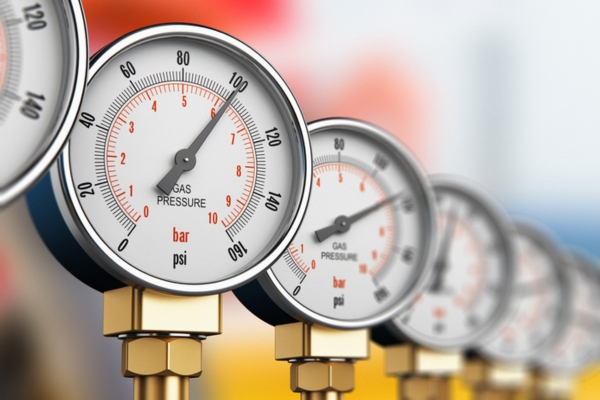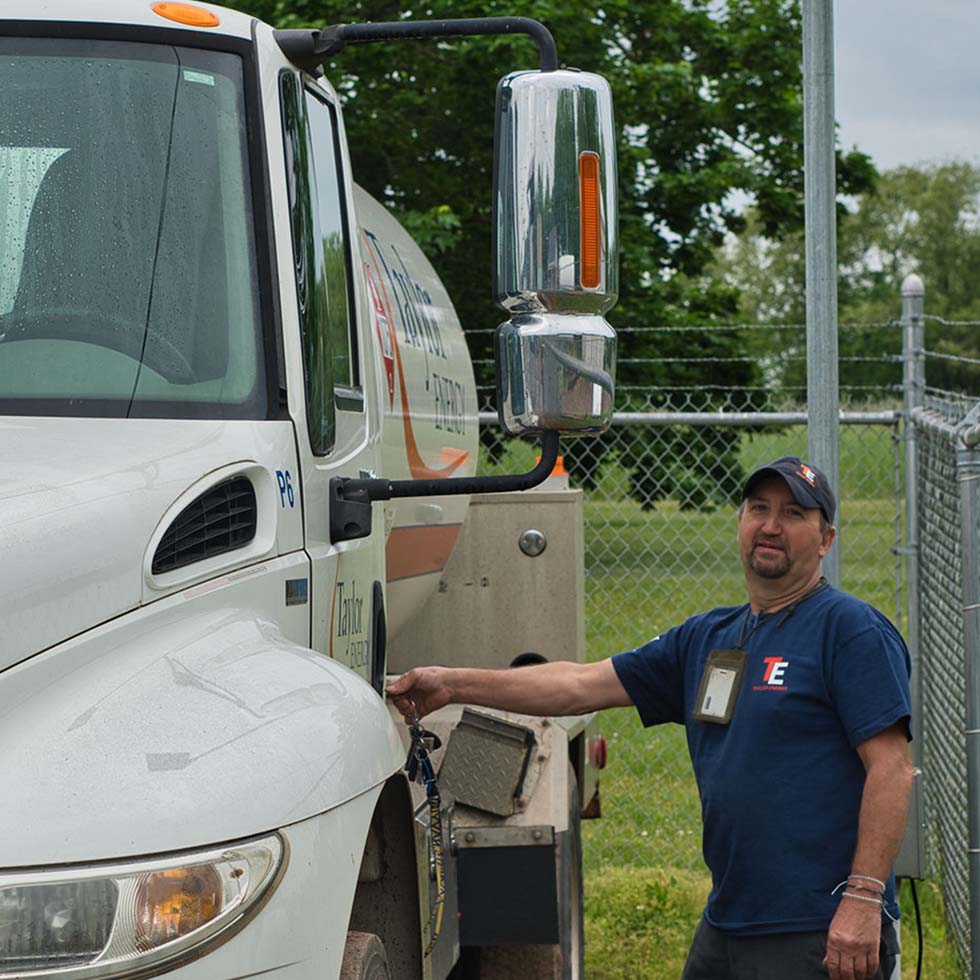Contents
Propane is known to provide power for home heating systems. However, it remains essential in the summertime, and having an ample supply is crucial for summer get-togethers and barbecues. Knowing how to tell if home propane tank is empty can ensure uninterrupted summer comfort and outdoor fun. Homeowners must monitor their propane levels closely to prevent the inconvenience of running out before arranging their next delivery. An exhausted propane tank means your appliances that run on propane cease to function. In this article from Taylor Energy, we will explore how to tell if the home propane tank is empty. Keep reading to learn useful tips and ensure you’re not caught off guard.
Monitoring Propane Tank Supply

With the proper maintenance, heating units can serve you well for over ten years. Familiarizing yourself with the components of your heating system, especially the propane tank, ensures seamless operation year after year. Knowing how to assess the propane tank’s fill level to avoid running on empty. Given the tank’s thick, non-transparent walls, a distant visual inspection won’t reveal much. Yet, several straightforward techniques exist to help you estimate how much propane remains. Here are practical methods to keep track of your tank’s fuel levels:
Utilizing a Propane Tank Gauge

Most propane tanks come equipped with built-in devices for measuring the fuel level. These gauges display the current quantity of propane, so it is advisable to monitor them regularly. If your tank lacks an integrated gauge, consider purchasing an external one and getting it installed. The gauge’s dial indicates the propane’s percentage within the tank.
To find out the actual amount of fuel, simply multiply the percentage shown by the tank’s total capacity. For instance, if the gauge reads 60% on a 400-gallon tank, you’re left with roughly 240 gallons. Establishing a weekly check-in routine helps you understand your usage patterns and estimate how long your propane supply will last.
Learn to detect when your home propane tank is empty to ensure uninterrupted comfort this summer. Contact Taylor Energy for reliable refills and peace of mind.
Estimating with the Warm Water-Cool Hand Method

Precision isn’t always necessary for a rough estimate of your propane levels. If the gauge is missing or malfunctioning, you can still gauge the tank’s fill level through its surface temperature. Simply douse the tank with warm water and feel along its sides with your hand. You’ll notice a distinct temperature shift between the empty space above the propane and the liquid fuel itself.
The point where the tank begins to feel cooler indicates the top level of your propane supply. As time goes on, this level will drop. Plan your next propane delivery before the levels diminish significantly to avoid running out.
Calculating with Basic Math

If you’re comfortable with mathematics, you can use simple calculations to estimate your propane supply more precisely. Start by determining your propane tank’s volume. Should the capacity be listed in pounds, convert it to gallons by dividing by 4.2. Next, calculate your heating system’s fuel consumption rate, measured in BTUs (British Thermal Units) per hour. A BTU represents the energy needed to increase the temperature of one pound of water by one degree Fahrenheit, making it an effective method for comparing the energy content of various fuels.
A single gallon of propane generates approximately 91,452 BTUs of thermal energy. To estimate your heater’s propane consumption, locate its BTU rating on the appliance label and divide this figure by 91,452. For instance, a heater with a 30,000 BTU rating uses about 0.328 gallons of propane per hour, equating to 7.87 gallons daily and approximately 236.19 gallons monthly. Conversely, a larger home’s heating system rated at 50,000 BTUs will consume around 0.547 gallons hourly, 13.12 gallons daily, and 393.65 gallons monthly.
These calculations are based on continuous operation and assume the heating system is in new condition. It’s important to note that a heating system’s efficiency or effectiveness in converting fuel to heat decreases over time. Factor this into your calculations to more accurately predict how long your propane supply will last.
The Importance of Refilling the Propane Tank at 30%

Scheduling a propane refill should be done before your tank is empty. Leading propane suppliers advise arranging your next delivery when your tank’s level reaches 30%. Maintaining this margin ensures you have enough propane to cover any unforeseen delays, whether due to supply challenges, traffic, limited delivery fleet availability, or adverse weather conditions. Adopting a proactive approach to your propane refill schedule is a wise strategy to ensure you never find yourself in a cold home.
Weather unpredictability can drastically affect your fuel usage. A sudden drop in temperature can significantly increase your propane consumption, turning a week’s supply into just a few days’ worth of heat. Waiting until your tank is nearly empty risks your comfort and safety. Therefore, the 30% threshold is a wise guideline.
Before scheduling a propane refill, inspect your tank for any signs of leakage. Addressing leaks promptly is essential to prevent fire hazards and avoid wasting fuel. Should you discover any issues, immediately contact professionals for a thorough inspection, cleanup, and necessary repairs to ensure your system’s safety and efficiency.
Don’t let unexpected surprises ruin your summer fun! Learn simple methods to check your propane tank levels and rely on Taylor Energy for dependable refills. Call us today for delivery!
Reasons Running Out of Propane is Bad

Why effective tank management is crucial.
Appliance Shutdown
Depleting your propane supply immediately ceases all propane-fueled appliances. Heaters will fail to protect against the cold, stoves will not allow cooking, and water heaters will not provide warm showers.
Learn how to tell if your propane tank is running low, and trust Taylor Energy for timely refills and expert service. Call us today!
Rust Accumulation Risks
When propane levels drop, air fills the void, bringing moisture that can lead to internal rusting. Persistent moisture fosters corrosion, weakening the tank’s structure and increasing leak risks. Moreover, rust can obscure propane’s distinct odor, delaying leak detection and exacerbating the issue.
Avoiding Property Damage
The heat from your system benefits not just the occupants but the property itself by preventing pipes from freezing and bursting, which can result in expensive repair costs.
Propane FAQs

Below are frequently asked questions about propane to help you better understand its use, safety, and management in your home.
What Should I Do If My Propane Tank Gauge Is Stuck?
If your tank gauge appears stuck, it could be a mechanical issue. It’s advisable to contact Taylor Energy for a professional inspection to ensure accurate readings and prevent any potential safety hazards.
Can Propane Tanks Be Painted To Match My Home’s Exterior?
Yes, propane tanks can be painted, but it’s important to use light, reflective colors to prevent overheating. Always consult with Taylor Energy first to ensure the painting process meets safety standards and doesn’t affect the tank’s integrity.
How Often Should Propane Tank Regulators Be Replaced?
Tank regulators should typically be inspected every 10 years and replaced as needed. Regular maintenance checks by Taylor Energy can help identify when a replacement is necessary to keep your system running safely and efficiently.
Are There Environmental Benefits To Using Propane In My Home?
Propane is a clean-burning fuel, producing fewer pollutants than other fossil fuels. Using propane for heating, cooking, and hot water is an environmentally friendly option that lowers your carbon footprint.
What Happens During A Propane Delivery?
During a propane delivery, Taylor Energy primarily focuses on refilling your tank. They may perform a basic visual inspection to ensure there are no obvious safety concerns. However, detailed checks like assessing regulators, hoses, and connections typically occur during scheduled maintenance visits, not standard deliveries.
Conclusion
Allowing your propane tank to empty can be risky, expensive, and troublesome. Regularly check your tank’s level to avoid unforeseen complications during colder periods. Apply the strategies outlined here to gauge fuel levels effectively and schedule refills when the tank is about 30% full. This proactive approach ensures a smooth, worry-free experience with your propane system.
Call Taylor Energy for Premier Propane Delivery
For top-notch propane delivery services in Northern Connecticut, remember to reach out to Taylor Energy. Our commitment to providing high-quality, efficient, cost-effective fuel deliveries is unmatched. Our friendly approach to service ensures a satisfactory experience every time.
Rely on Taylor Energy for exceptional service tailored to your needs. Don’t hesitate to call us today to explore our diverse delivery plans and flexible financing options.
In addition to propane delivery, Taylor Energy offers a comprehensive range of HVAC services to improve your home’s comfort, air quality, and energy efficiency. Our offerings include heating and cooling system tune-ups, repairs, installations, and more. Contact us now for more information!
You can click here to contact us now or call us at (860) 623-3308 to find out more! Click the link to view our service area.

Related Articles:
- Propane Use In The Summer: What’s Normal?
- Choosing Propane Delivery: Automatic vs. Will-Call – Which Suits Your Needs?
- Why Is Propane Environmentally Friendly?
- 9 Reasons To Choose Propane Vs Electricity In Your Home
- Propane Fireplaces: Five Great Benefits
- Questions To Ask When Choosing A Propane Company
